Utawarerumono: ZAN advertises itself as an action-packed brawler and it’s certainly not wrong. It is essentially a hack’n’slash game where you choose a character and take on hordes of enemies while completing objectives. It was developed by Tamsoft who have worked on similar titles including Senran Kagura and published by NIS America. It is only playable on the PlayStation 4.
I was pleasantly surprised to find out that it was being translated into English, if just because it’s so niche. This is a game aimed at people already familiar with the Utawareumono series.
The concept behind this game is that it is the story of a visual novel; Utawarumono: Mask of Deception, only reimagined as an action game. The story is told through narrated scenes over screenshots from the visual novel, some partially animated scenes on 3D or 2D backgrounds and the occasional cutscene.
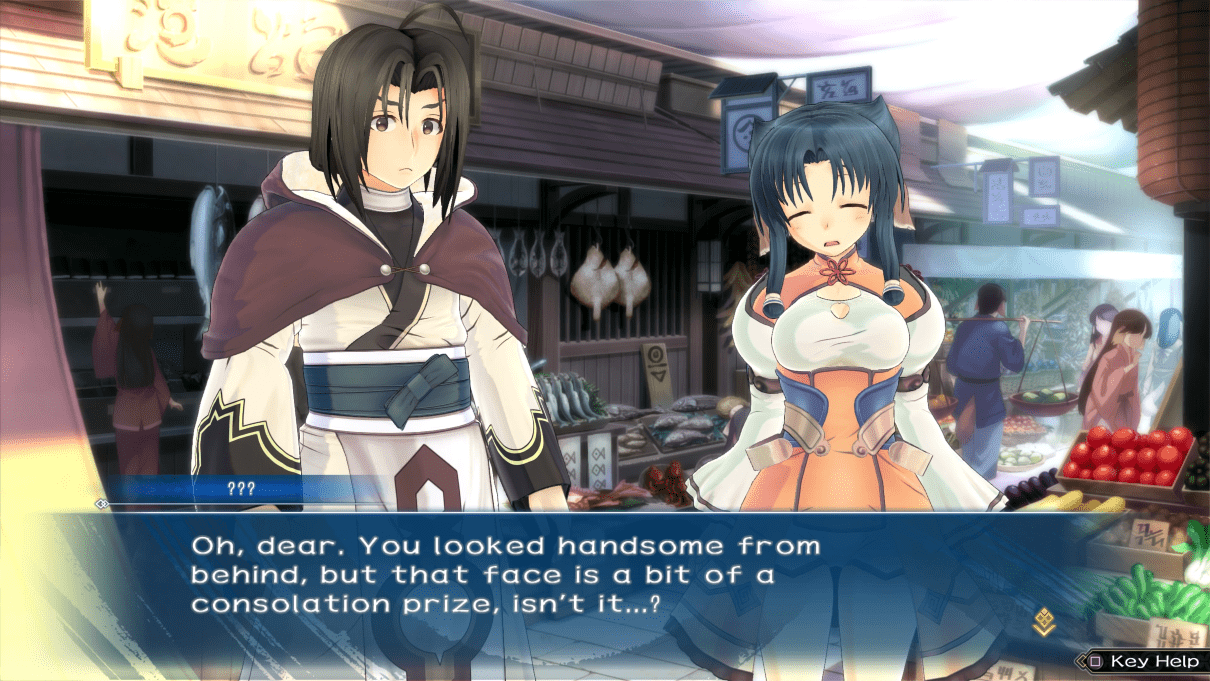
As it is an action game, it does not go into the story in much depth. It skips through the story very briefly through narrated scenes and some dialogue. Quite often events are referred to which weren’t covered in the ZAN game. Some of the characters are not introduced much if at all.
As an example, we learn at the start that a man with no memory was found by a girl named Kuon who is mentioned to have mysterious powers. She names him Haku. We then meet Maroro and Ukon and we’re suddenly in a fight with some bug monsters called gigiri. It’s very concise.
As someone who hasn’t played Utawarumono: Mask of Deception (yet – I bought it a while back), but is familiar with the series, I followed along. It felt like I understood the general events but often didn’t know the reasons why and I was left with quite a few questions.
Still, I enjoyed following along with the story and I felt like I got to know some of the characters. Playing ZAN first will likely have spoiled the story of Mask of Deception for me, but it has made me want to play it soon anyway.
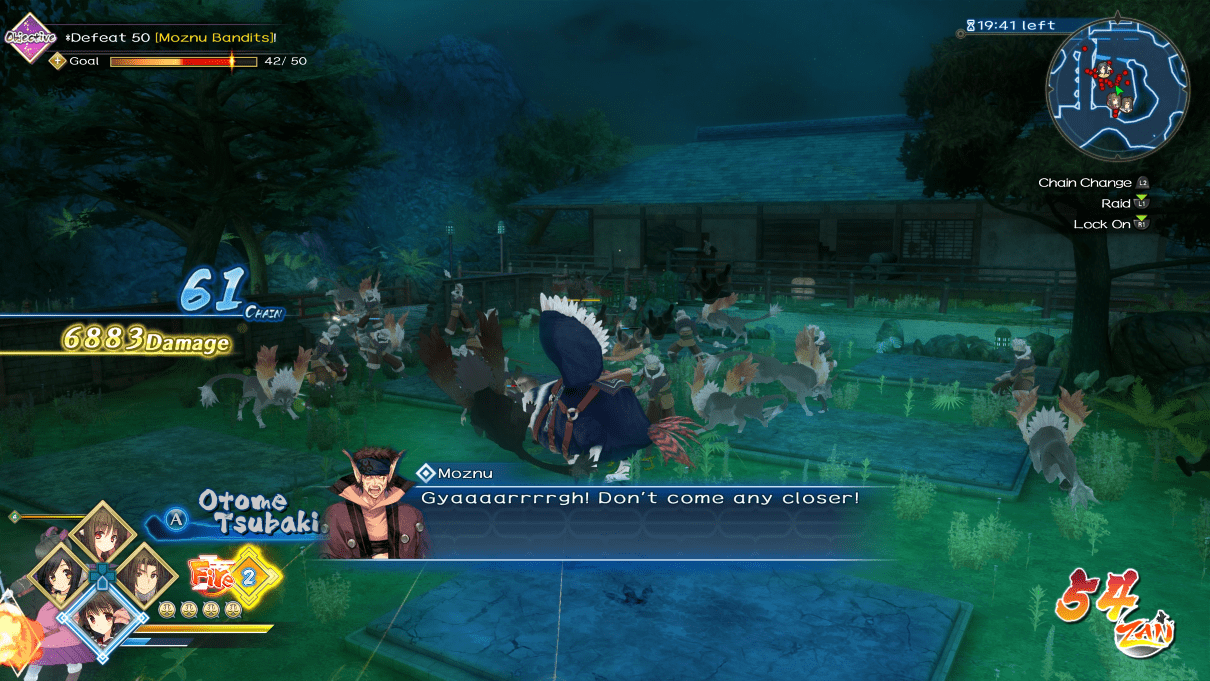
Much like the game itself, I’ll not linger on talking about the story and move onto other areas.
Most of your time in the game will be spent in combat. In most missions, you will choose up to four characters from a cast of up to 12 characters. Each character can be leveled up and stats can otherwise be increased by equipping scrolls which you buy with Sen and using bonus points to increase stats.
Each character plays in a unique way. They move at different speeds, attack in different ways and have their own unique skills. While you can get through the story just by using your favorites, there is a technique to combining characters in particular ways to complement each other. Some characters can equip healing skills, some are good at clearing lots of weak enemies and some are better at taking damage for the others. This can be further customized with scrolls which range from simple stat increases to drawing enemies or one-hitting weak enemies.
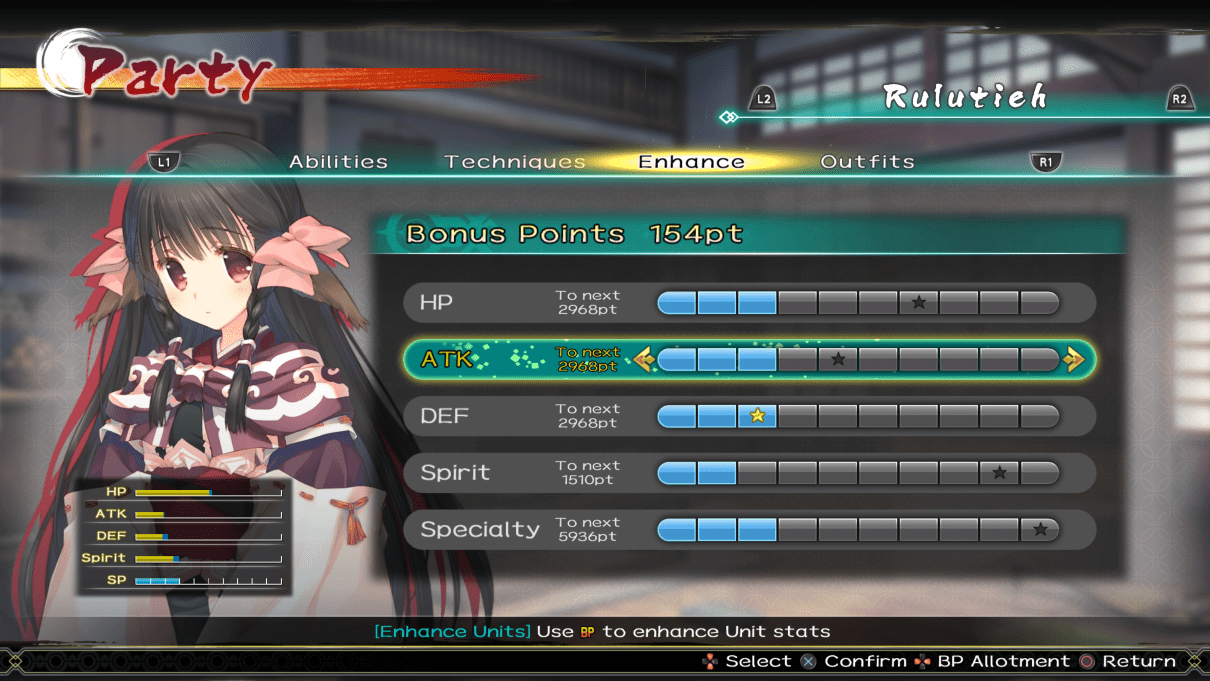
I’m rather impressed at all the customization in this game. I didn’t expect that the characters would be fairly unique and then to be able to choose who to take into battle, change their equipment, stats and skills on top of it. As a bonus, there are even unlockable outfits.
When fighting weak enemies, there will likely be a lot of button mashing. Mashing the square to combo attack and mixing in the odd strong attack with the triangle will get you through a good portion of the game. It’s fun but repetitive. Even weak enemies do take quite a few hits to kill, but there isn’t much technique to it.
When fighting stronger enemies, it does get more interesting. This is the point where you will be using all the features. You can combo and strong attack as normal, but you will need to switch between characters mid-battle at times. You will need to learn what each special attack does, or at least figure out who is set up to heal.
You will need to learn to dodge. Dodging can be a bit slow at times, but it comes in very useful against bosses.
There are quite a few more combat functions. There is also a mode to increase your attack temporarily and a once per battle ultra attack which I always feel never does enough damage for the amount of resources it uses. There are bonuses for attacking from behind and enemies which need to have their guard broken before taking damage. There is more I’ve not mentioned too. It’s fairly involved for this style of game.
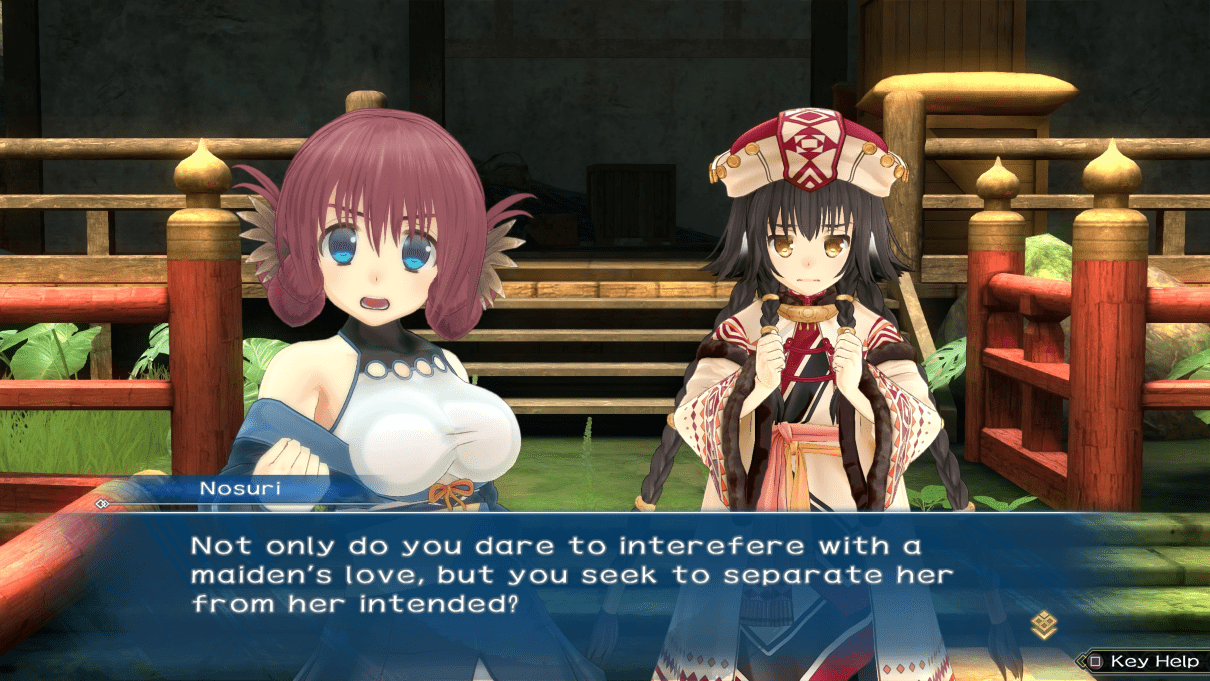
It’s worth noting that the game doesn’t do a brilliant job of explaining the functions and abilities you have in battle. I ended up learning quite a few things from the loading screen tips, but some of them didn’t appear until I was hours in the story. One which I was curious about for a long time was items dropping on the battlefield – I later learned that these automatically convert to Sen.
Overall, while it does have repetitive elements, I do enjoy the battle system. I’m particularly a fan of being able to switch between characters to access different abilities and to revive each other.
There are four modes to play on. Story mode, battle recollections, free missions, and the battle arena. I played all of these in single-player, but it is worth noting that the game does support 1-4 player co-op. I cannot comment further on this as I am playing before release, so no-one is online to play with now.
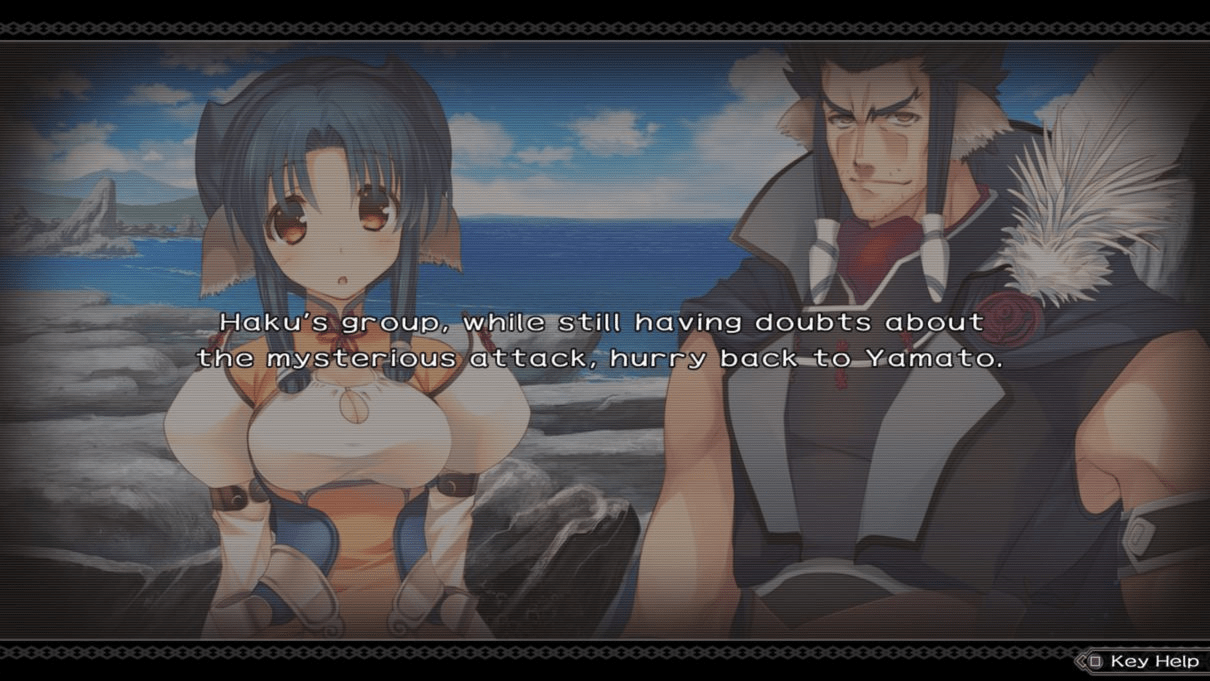
The story mode consists of 18 chapters. These will either be entirely story sections or include some story and a battle. The gameplay in this mode is relatively easy and I only once came close to losing a battle.
Battle recollections is where you can replay any of the 13 battles from the missions you have completed in story mode. Sometimes the missions are slightly different. In addition, all of the missions have sub-objectives which can be completed to earn bonuses. After completing the story, an additional hard mode unlocks.
Free missions are unlocked later in the story. They are some additional missions and useful for earning bonuses and are needed for some important unlocks. Some of the later ones are slightly difficult.
The battle arena is unlocked later in the story. Each character will have a challenge here which they can complete. These are very difficult, but give a unique and worthwhile reward at the end, which I’ll leave you to discover.
In general, all of these modes will contain missions. Most missions just involve killing certain enemies. It’s often broken into several objectives. For example, one mission had me kill 10 soldiers, then 3 officers, 1 veteran, 5 officers, 50 soldiers, then the boss. There are also sometimes objectives to survive a certain amount of time or collect certain items, amongst others.
Most missions have the player complete an objective and then they will need to run to a marker and trigger the next objective themselves. In the case of sub-objectives, the player can choose whether to trigger them for extra rewards or to continue along the main objective path.
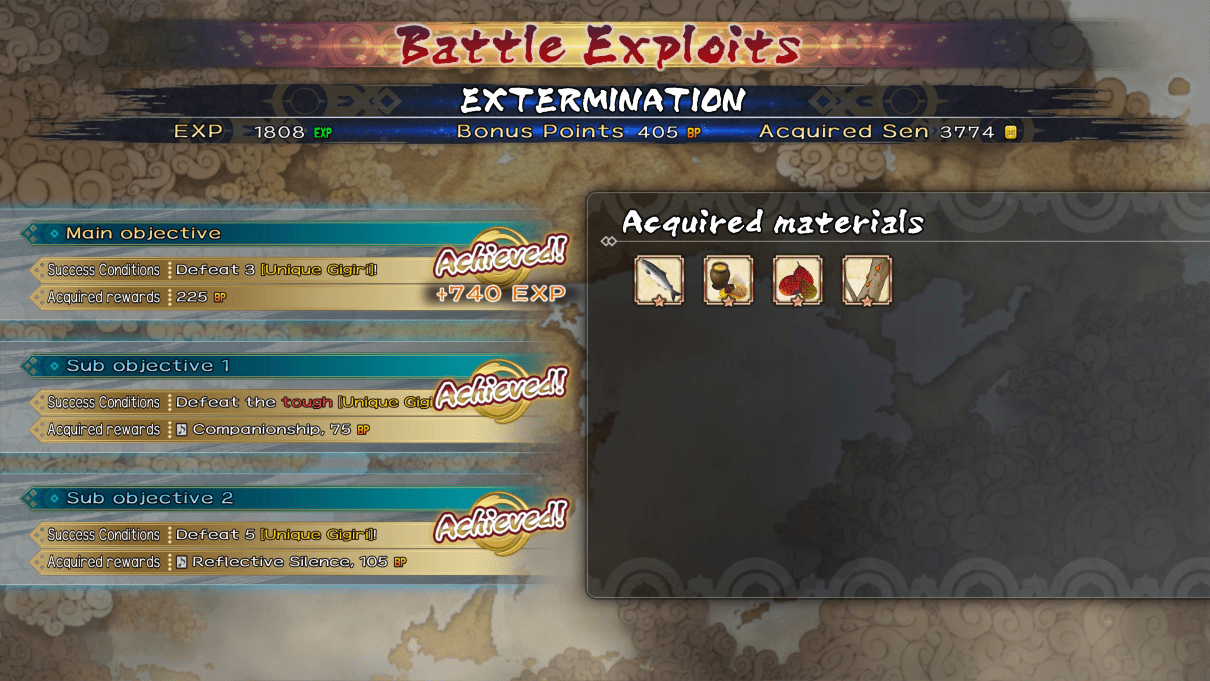
I’ve mentioned bonus points and Sen which are the normal rewards other than experience, but I’ll quickly explain them a bit further. Bonus points can be gained in some of the modes. Only characters who participate in the battle will earn them, unlike experience points where all characters will level up at least somewhat. Bonus points can be used to buy stat increases for the character and to increase their unique skill and ability to hold more scrolls. You can use these to spec certain characters towards certain areas or keep them average. I find this works very well as I’ve pointed one of my regular team to attack and then set her up to take on bosses, while another is set towards defense and staying alive to revive others.
Sen is money. It can be spent on a lottery where you can earn and level up scrolls which provide various benefits. High-level scrolls can only be earned from higher-level lotteries, which have unlock requirements. You can also earn outfits from these or fail and instead earn a small amount of money or bonus points. You can also earn outfits in other ways such as completing certain objectives and unlocking a ‘medal’ for it.
My feelings are a bit mixed on the gambling system to unlock scrolls, but I suppose it keeps things more interesting than directly choosing and upgrading them.

I feel like the graphics are all very high quality. The models in the story scenes are particularly good and it looks like a lot of care has gone into the environments.
The background music is great. There’s a fairly wide soundtrack with plenty of tracks to fit the scene. The voice acting all sounds good too, with voice actors who seem to fit my impressions of the characters. It is worth noting that voices are only in Japanese and there is no English sub for people who prefer that.

While I have my concerns with how briefly the story is covered, I certainly enjoyed Utawarerumono: ZAN. I was surprised at how good the gameplay was when getting further into the game. It is a bit pricey for the amount of content, which I suppose is due to the niche nature of it. It will be more worth it if you plan to complete all of the modes, as story mode alone could be completed in less than 5 hours.
If you are on the fence regarding this game, there is a demo on the PlayStation Store.
UTAWARERUMONO: ZAN IS RECOMMENDED

This game can be bought digitally via the PlayStation Store or physically via retailers such as Amazon (US)/Amazon (UK)
Thank you to NIS America for providing a review copy of the game.
Links may contain affiliate codes which help pay for the server and domain costs of the website.

A gamer since the days of Amstrad and DOS and someone who has dabbled in a variety of professions. He enjoys a wide variety of genres, but has been focusing on visual novels and virtual reality in recent years. Head Editor of NookGaming. Follow him and the website on @NookSite.

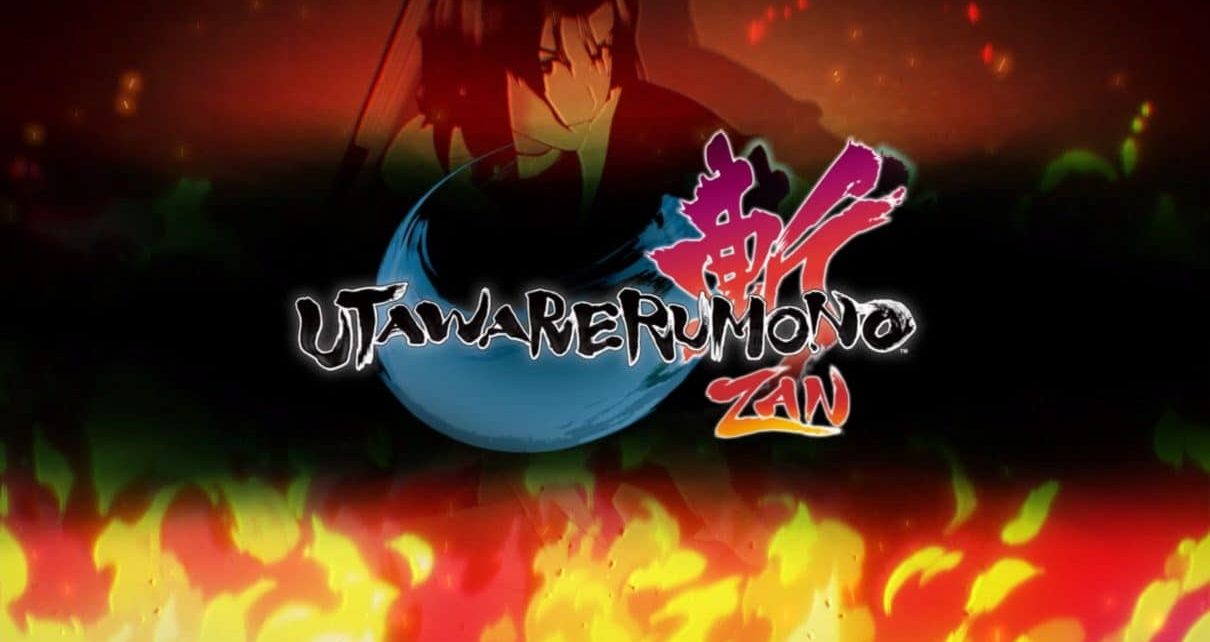

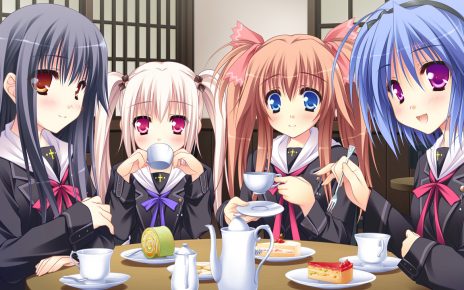

Comments are closed.